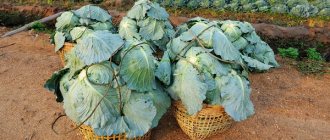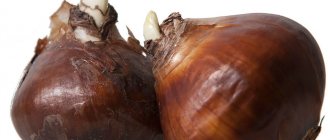It is not for nothing that potatoes bear the honorary name “second bread”. It has firmly entered the menu of every person. It is impossible to imagine soup without it; it perfectly complements meat and fish dishes. It is planted in almost every garden plot. The digging period begins in August and can last until October. The lucky ones are those who own their own houses with spacious cellars and basements. This is where it is most convenient to store the harvested crop. But what about apartment owners? It's simple. Look around your home - there will certainly be a suitable place there. All that remains is to decide on the container and start preparing the tubers.
Features of storing potatoes in an apartment
You can easily place potatoes for storage right in your apartment if you meet a number of necessary requirements. Having collected the harvest from the plot, there is no need to immediately store it in the apartment. It must be properly prepared to extend its shelf life.
Preparation
Any potato needs preparation for storage, whether it is collected with your own hands or purchased at the market. As soon as you deliver the vegetables home, the question immediately arises of how to place them correctly so that the tubers last as long as possible. Most often, a balcony or cellar for residents of the first floors comes to the rescue. Sometimes in high-rise buildings, residents have their own basements, where they can also store crops if these premises are not flooded during the season.
Whatever location you choose, the tubers need to be properly prepared. To do this, you will have to adhere to a number of certain conditions:
- Drying . This procedure is performed immediately after the tubers are removed from the ground. It consists of placing vegetables in the sun for about 2-3 hours so that they dry out and the stuck soil falls off the peel. This helps reduce the risk of rot forming. After this, the potatoes must be left in a dark, well-ventilated place. It is desirable that the humidity in the room is 95% and the air temperature is +12...+18 °C. During this period, damage received from garden tools during the digging process will heal, and resistance to the development of putrefactive diseases will increase. If sprouts begin to appear on the tubers, all of them need to be plucked off.
- Maintaining temperature conditions . Potatoes can easily become rotten if the storage temperature is inappropriate. Scientists have proven that potatoes “breathe” during storage. A specific microenvironment is created between the tubers, in which there is both moisture and carbon dioxide. Potatoes will begin to lose their shape or shrivel if the temperature is too high due to excess evaporation. The taste of such a product will obviously not be the most pleasant. That is why it is believed that potatoes feel best at +3...+7 °C. Experienced gardeners line rows of potatoes with rowan or wormwood leaves, this reduces the likelihood of rot and bacteria appearing. Periodically you need to sort through the crop, removing spoiled and rotting tubers and pinching off the sprouts that have appeared.
- Choosing the right variety . When planting potatoes or purchasing a ready-made crop that will be stored for a long time, pay attention to the variety. Early potatoes will not last long; they need to be eaten almost immediately after digging. Varieties with average ripening periods can be stored for no more than three months. But it is best to choose mid-late and late-ripening varieties. If stored properly, they may well last until spring. Keeping quality will be influenced by the composition of the soil in which the potato “sat”, the conditions for its cultivation, the weather when digging, and even the phase of the Lunar calendar. Experienced gardeners know that with an excess of nitrogenous fertilizers in the garden, the shelf life of potatoes drops significantly.
- Sorting . Before sending the crop for storage, you need to carefully examine it again. If you see tubers with marks from garden tools, they need to be removed; bacteria will quickly begin to multiply in places of damage. But such potatoes can be eaten as food, but on the condition that there are no signs of rot on them and the insides have not turned black. If such potatoes get into the general mass, they can quickly rot and infect all neighbors.
There are no special difficulties or intricacies in storing potatoes at home; just follow a few simple rules, prepare the place, and all winter you can enjoy having delicious potatoes on hand.
Necessary conditions for storing potatoes in an apartment
Of course, today you can buy vegetables all year round. Then there will be no problems with storage either; in any, even the smallest apartment, there will always be somewhere to place a couple of kilograms of potatoes. But lately, crops collected from one’s own garden have become increasingly popular. It tastes better and contains many times more beneficial properties.
That’s when gardeners start thinking about where to store it. The underground is, of course, good. What if he is not there? You can also find a suitable place in the apartment, so don’t be discouraged.
Humidity
An important condition for home storage is maintaining the required level of humidity. The optimal figure is 80-90%. But if, in combination with it, the indoor climate remains too warm, then sprouts will begin to actively appear on the tubers.
How can you achieve the right humidity for your crop?
- Ventilate the potato storage area.
- Provide the required level of air flow.
- Do not store potatoes where there is a lot of evaporation.
- Do not place containers with vegetables close to the wall, as this will cause condensation to form on the tubers.
- To prevent moisture from appearing, the tubers can be lined with dry straw.
- Potatoes are strictly not recommended to be placed next to other vegetables; they are only suitable next to beets.
If the kitchen is chosen as the storage location, make sure that the hood is always running while cooking. Otherwise, the tubers will become covered with condensation and begin to rot or sprout.
Temperature
The most difficult thing in indoor storage is to ensure a comfortable temperature for the potatoes. Naturally, there can be no talk of any +3..+7 °C. But a very useful property of potatoes comes to the aid of gardeners - this is a dormant state in which the tubers can remain from 1 to 3 months after being removed from the garden. Therefore, even the absence of a balcony is not an obstacle to storing crops at home. You can regulate temperature indicators in several ways:
- Never leave the box in direct sunlight. As soon as the tuber turns green due to ultraviolet radiation, dangerous solanine will appear in it, and it will no longer be possible to eat it.
- In every home there is a place where there is no heating. This could be a hallway, storage room or balcony. This is where you need to place the potatoes for storage.
- Avoid freezing of fruits, which occurs already at the onset of the first frost. If vegetables were stored on the balcony, they should be returned to the apartment after it gets cold.
- Do not place potatoes near heating appliances.
- Leave a thermometer inside the container to always know the temperature.
So, despite the fact that potatoes are best stored at a temperature of +2...+7 °C, even at +16...+19 °C in an apartment they can last up to six months. But it is very easy to shorten this period by violating storage conditions, especially with regard to humidity. If you don’t want your entire crop to turn into a rotten mass in a couple of weeks, try to follow the basic recommendations.
If the thermometer on the balcony drops below zero, the risk that the fruits will freeze increases. After thawing, their taste will change dramatically; such potatoes will no longer be suitable for cooking.
Illumination
Before storing potatoes for permanent storage, they must be kept in fresh air for about two hours in dry, sunny weather. Firstly, the fruits will dry well. Secondly, all the earth stuck to it will fly off the peel. After this, the potatoes should lie for some time in a dark, well-ventilated room and only then go into bags.
Do not expose potatoes to direct sunlight, as this will cause the synthesis of a dangerous substance – solanine. In very small quantities it suppresses the activity of pathogenic microorganisms. But if its concentration increases, then the fruits themselves will acquire a greenish tint, and it will no longer be possible to eat them. Therefore, properly cover those vegetables that are stored on the balcony.
Try to maintain the same level of temperature and humidity throughout the potato storage period, this will help reduce the risk of rot and reduce the number of sprouts that appear.
Air access
To increase the shelf life of potatoes, it is necessary to periodically ventilate the room where they are stored. This measure will help regulate the humidity level in the room. Those vegetables that breathe best are those stored in bags, nets or plastic boxes with holes around the perimeter of the walls. If you choose wooden containers, make sure they have holes for air.
It is strictly forbidden to store potatoes in plastic bags and packages. This material does not breathe at all; the tubers very quickly begin to rot and become covered with mold. You can no longer eat such vegetables.
A little history
Peter the Great brought potatoes to decorate flower beds and court lawns. With his appearance, peasants and commoners developed an unsophisticated belief. After all, potatoes have eyes, so eating them means eating a human soul. It is for this reason that it did not gain popularity in those days. Under no circumstances did people agree to grow it, much less cook it as food. The kings of many countries went to various lengths, offering rewards, gold, medals, lands. But nothing could influence the peasants. Only after 1850 this product was tested and began to be planted en masse throughout Russia and in other countries.
Potatoes are a finicky product, because if stored incorrectly, they can freeze or become flabby. If this happens, then all you have to do is throw it away, because harmful substances and poisons accumulate in it. She is no longer capable of producing offspring, that is, she is unsuitable for planting.
Potato storage container
To ensure that the potatoes last a long time and do not rot or become moldy, you need to choose the right container or container. There are several options for placing potatoes for winter storage:
- A plastic bag is only suitable for short-term storage of potatoes in the refrigerator or for transporting tubers.
- A fabric bag allows air to pass through well, allowing vegetables to breathe in it.
- A mesh made of nylon is inexpensive and provides air circulation between the tubers.
- Plastic containers are easy to use, have holes in the walls and bottom, are available for purchase, and are sometimes displayed in stores for free.
- A wicker basket is well ventilated and prevents mold from growing.
- Cardboard boxes are not the best method, but they will work fine if you line the bottom with newspaper to absorb moisture.
- A wooden box is the most optimal option for storing potatoes; it can be either with gaps for ventilation or with double insulated walls.
Bags and boxes are the most popular means of storing potatoes. A wooden box, if properly treated and disinfected, will last for many years. The bag can also be used for several seasons if used carefully.
Conditions
Potatoes are an unpretentious crop, so there are no problems with their preservation. The most important factors for shelf life are:
- place;
- container;
- temperature;
- humidity;
- lighting.
Place
When the vegetables are sorted and selected, a place in the apartment is chosen where the tubers will be located. It should be kept away from heating devices and other perishable crops. The most common places where potatoes are harvested in an apartment are:
- storage rooms;
- balconies with glazing;
- dark cabinets with locking doors.
The location must be chosen based on the amount of potatoes. If you use a lot of it, then only a large storage room or balcony will do, if you have a cellar. It is convenient to keep no more than a couple of buckets of tubers in the closet.
Tara
The main point when selecting containers is its ventilation. It is imperative that air gets to the potatoes, otherwise they will dry out or rot. Most often it is stored in wooden boxes with slots. The top of the box can be covered loosely with a lid.
If the number of tubers is small, you can pour them into a plastic bucket, the bottom of which is lined with paper to protect it from moisture. It is allowed to store potatoes at home in plastic bags or bags, just do not tie them at the top.
Temperature
The lower the temperature, the longer the potatoes will be stored. The best option is to maintain the temperature at a level from plus 10 to 16 degrees. At higher temperatures, potatoes begin to soften, lose their taste and sprout. The germination process is especially active towards the end of spring.
Too low a temperature is also harmful to the tubers: they freeze and become tasteless. In addition, potatoes quickly spoil in the cold and are not suitable for food.
Lighting
A prerequisite for proper storage is the absence of daylight. You can store the tubers in a dark place for a long time, but if you put them in the sun’s rays, the skin wrinkles, and the fruits themselves lose some of their juice and become dry. The sun stimulates the awakening of the eyes, so shoots will soon appear on the tubers.
In the dark, the eyes “sleep” until mid-spring and only with warming do they awaken and grow over the surface of the vegetable.
Humidity
Select a place in the house for the culture so that the humidity is at a minimum level. 15-50% is enough for the potatoes to lie well. When humidity rises, rot occurs and spreads very quickly. Humid air also promotes the germination of eyes, which are not at all needed for storage and will only shorten its shelf life.
How to save potatoes for planting in an apartment
Not all the potatoes collected are used for food. At the sorting stage, tubers are selected from the entire harvest to be used for cooking in the fall and winter. But some of the collected potatoes must be left for next year in order to plant them in the garden. Especially if the harvest from these bushes impressed you. For these purposes, you need to choose smooth, dense tubers that are not too large in size. Make sure that there are no traces of a shovel or fork on them, otherwise the potato itself will get sick and infect all its neighbors. Experienced gardeners know that temporary exposure of vegetables to the sun will help extend the shelf life. Just a few hours are enough for solanine to begin to be synthesized. In large quantities it is dangerous for the digestive tract, but in small doses it creates natural protection against pathogenic microorganisms.
To select seed potatoes for home storage, you must adhere to the following recommendations:
- Do not try to choose the largest tubers; their size should not be gigantic, otherwise they may not last until planting.
- Do not rush to quickly put seed potatoes into storage containers. It is best if she lies in the fresh air for a couple of weeks. Then the tuber will dry out and produce the required amount of solanine.
- Potatoes do not like heat; they thrive at temperatures of +4...+7 °C. But you need to come to them gradually, lowering the temperature by several degrees every day.
- Until the first frost, seed potatoes will lie on the balcony or loggia without any problems.
- To prevent too much moisture from accumulating, you can place a layer of beets on top of the potatoes. Its structure is designed so that the surface of the vegetable is able to absorb all excess moisture.
As soon as the night temperature outside begins to drop below zero, the crop must be brought into the house. Just don't place the box near the battery. Remember - potatoes love cool weather.
Too often, potatoes do not need to be moved from place to place and mixed, but periodically it is necessary to inspect the tubers for the appearance of rot. Young shoots that appear must be removed in a timely manner, and about a month before planting, on the contrary, their growth must be stimulated. To do this, vegetables are placed in a warmer place, it is advisable to increase the temperature daily by 1-2 degrees. The better the germination (i.e., the more sprouts sprout), the better the potatoes will take root and the more harvest will be harvested.
Which potatoes last longer?
Sort through the tubers and leave only those that meet the following parameters:
- Firm to the touch. If the potato feels soft when you squeeze it, the starch inside has already begun to break down. Such tubers will not last long.
- With smooth dense skin. The peel protects the potatoes from the penetration of excess moisture and oxidation. The more reliable this protection is, the longer the potato will retain its nutritional properties.
- No dark spots or visible damage. Any damage to the skin or change in color is a sign that the tuber has already begun to deteriorate.
- No sprouts. As potatoes sprout, they use up the nutrients they contain. Starch also begins to break down. Potatoes with sprouts will quickly become F. Nourian, HS Ramaswamy, AC Kushalappa. Kinetics of quality change associated with potatoes stored at different temperatures / Kinetics of quality change associated with potatoes stored at different temperatures tasteless.
Common mistakes
There are no tricks to storing potatoes. But sometimes it happens that the crop deteriorates, becomes deformed and dries out. This can happen for a number of reasons. Let's look at the main storage errors:
- Sorting was carried out superficially; damaged tubers were included in the general mass.
- Early varieties that were not intended for these purposes were selected for storage.
- Next to the potatoes were other vegetable crops.
- The temperature regime was violated and humidity indicators were not observed.
- The harvest storage area was poorly prepared.
When is heating needed?
When storing potatoes on an uninsulated loggia, they need to be heated. To do this, use cold-resistant boxes that are powered from the mains. They consume electricity in amounts comparable to an incandescent lamp.
A good option is the so-called balcony cellar . It is represented by a backpack made of thick fabric, which is additionally insulated with padding polyester. In terms of strength, it is not inferior to ordinary boxes. Container capacity varies between 100-300 liters.
Heating is carried out by a carbon filament. To determine the temperature, a sensor is built into the “cellar”. After the end of the cold season, it is cleaned and folded. In this form it does not take up much space.
Tips from Mister Summer Resident
Lately, running your own household has become increasingly popular. Everyone wants to eat natural products that have grown on their own plot. But not all household plots are located near residential buildings that are used in winter. Therefore, many gardeners are forced to store harvested vegetables in the apartment. This is quite possible if you think through the conditions in advance and follow several rules, which our portal https://mrdachnik.com reminds you of:
- New potatoes that you plan to eat during the summer months are much more difficult to preserve in their original form due to the high temperatures in July and August. To replenish the amount of evaporated moisture from the surface of the tubers, place a container filled with water in the storage location.
- One of the priority places in the kitchen in order to store part of the harvest is the drawer under the sink or sink. It is best if the potatoes are kept in a ventilated container. Some housewives use baskets or boxes with holes for this.
- Isolate potatoes from all other vegetables and fruits; this vegetable does not tolerate almost any proximity.
- Wormwood, rowan and mint, placed in a box with the harvest, will help slow down the process of the appearance of early shoots.
- Never place boxes too close to the wall. This may cause condensation to form. If they stand on a concrete floor, then make an impromptu podium, for example, from bars 10 cm high.
Where to buy and what to look for?
When purchasing a container for potatoes, you need to focus on its price. The average cost of wooden boxes is 500 rubles. Plastic structures are cheaper, they can be purchased for 200 rubles. Wicker boxes will cost 1,500 rubles.
Top 3 best models
The most practical boxes for storing potatoes:
BranQ vegetable container transparent
The container is made of plastic . The top is open, which ensures food ventilation. By stacking containers on top of each other, you can save space. Once the drawer is empty, it can be used to store kitchen utensils. Price - from 396 rubles. Read reviews here.
Alternative M604, 650x415x395 mm
The mesh design ensures high-quality ventilation and crop safety. For convenient transportation, the container is equipped with handles. Price 1500 rubles.
Wooden box 31x23x16 cm
A stylish compact storage box will be an excellent solution for the kitchen. The product is made from solid pine needles and is highly durable and reliable .
Capacity up to 12 l. Price – 500 rubles. Read reviews here.
Preparing root vegetables
Immediately after the potatoes are dug up, they should be left on the ground to dry out a little. If the weather is cloudy, the potatoes are transferred indoors, where they continue to dry. It is extremely important to completely dry the vegetable, otherwise it will begin to rot and mold. The potatoes are not washed, but only the dried dirt is shaken off. To do this, you can use a brush or a hard cloth. Damaged root vegetables cannot be stored and are immediately put aside. It is advisable to select vegetables of the same size. Particular attention should be paid to the presence of diseases. Otherwise, one root crop can infect the entire batch.
The best varieties
Each variety of this root vegetable differs in starch content. If the potatoes are well boiled, this means that they have a fairly large amount of this substance. Foreign companies have special labeling, according to which the purpose of this root vegetable is adjusted. The least digestible variety is marked with the letter “A”. It is suitable for soups. The "B" variety is used for making potato chips, while the "C" variety is ideal for frying. When preparing mashed potatoes, naturally, you will need the most boiled type of potato, marked with the letter “D”. Root vegetables with a high starch content are best preserved.
For winter planting, as a rule, late-ripening varieties are used. These include such popular species as “crane fly”, “asterix”, “lorch”, “stonefly” and “picasso”.











